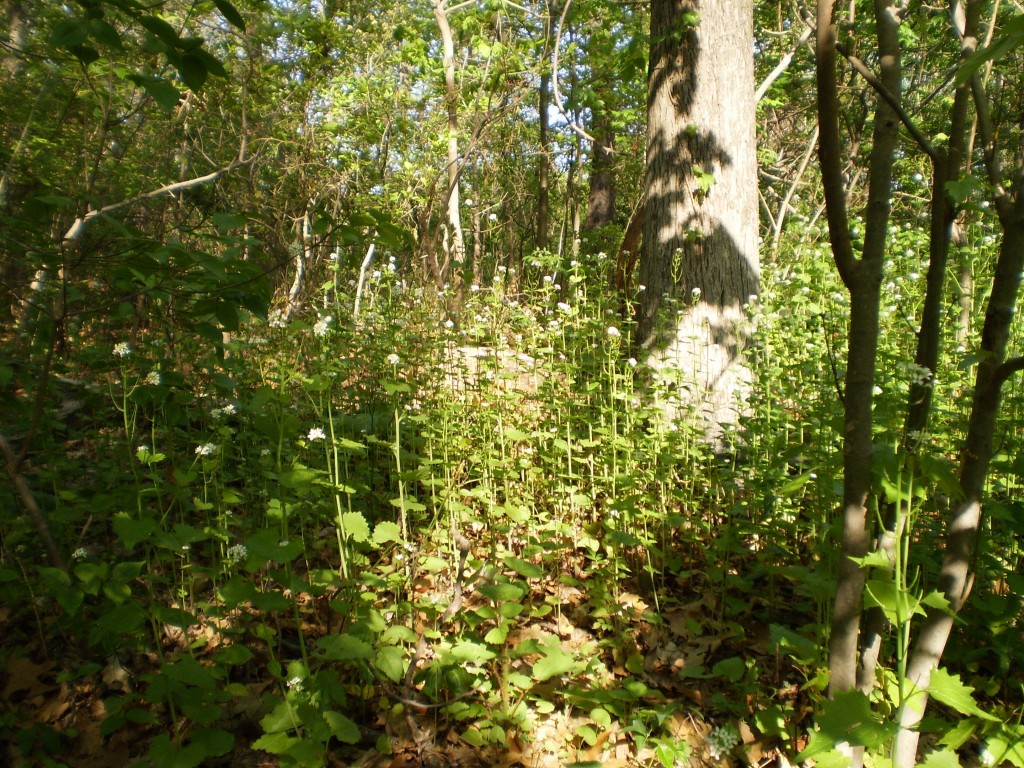GARLIC MUSTARD (Alliaria petiolata) IS BEING REMOVED FROM MORRIS PARK. OUR VOLUNTEER EFFORTS ARE SUCCESSFUL, AND AFTER FOUR CONSECUTIVE YEARS OF GARLIC MUSTARD REMOVAL, WE ARE SEEING THE FANTASTIC RESULTS: THE INCREASE OF OAK SEEDLINGS, Â WILD GERANIUM AND BLOODROOT FOR STARTERS- THIS URBAN FOREST IS REGENERATING BEFORE OUR EYES.
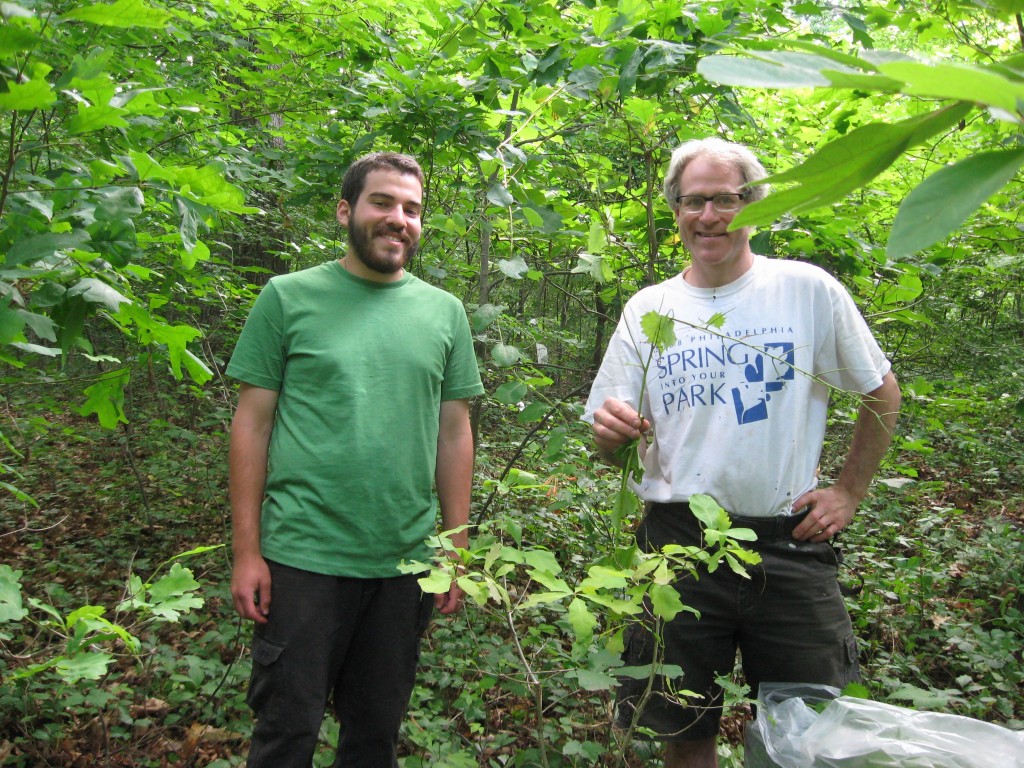
Jason Puglionesi and Sean Solomon have worked all afternoon, removing Garlic Mustard from Morris Park, an invasive exotic that has been dominating the herbaceous layer for many years. It would be great to know for how many years exactly; when did this plant arrive, and what  did the forest look like before its arrival?
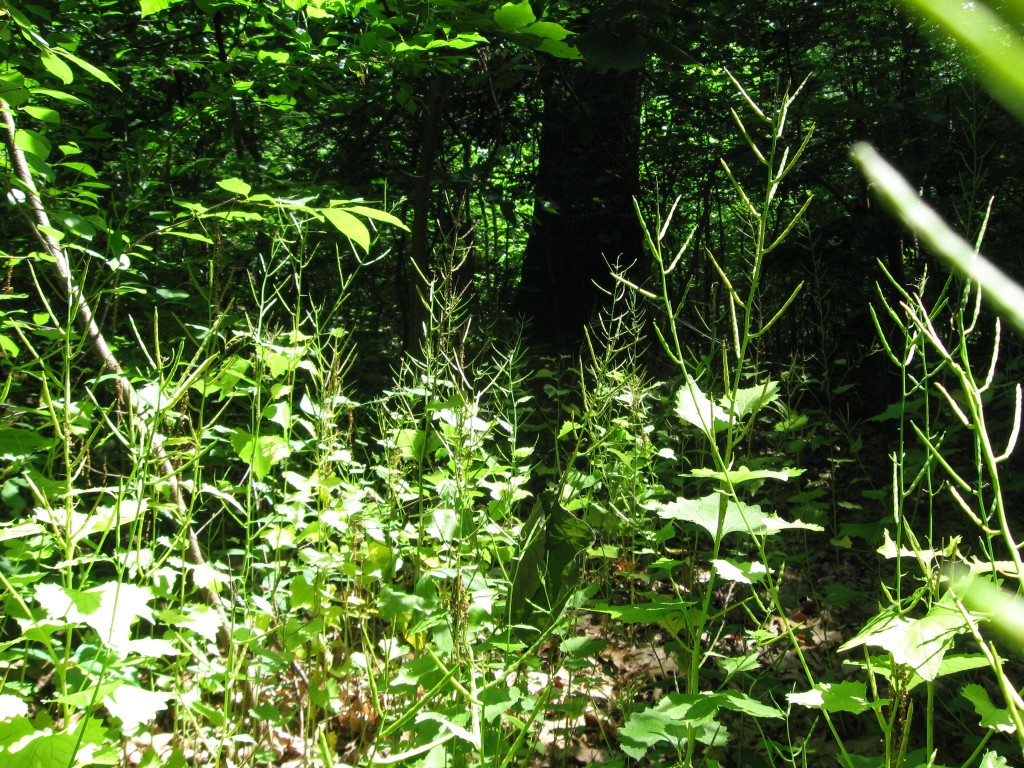
This is a typical scene of the forest floor in many parts of Morris Park at this time of the year. Â The plant with the spiny characteristics is the Garlic Mustard plant, and the spines are rows of seeds, ready to be propelled into the forest, to be germinated next spring, continuing the cycle of infestation, inbalance and blight upon the woodland.
Each plant has the capacity to produce hundreds of seeds, each seed having the capacity to produce one plant that will also produce hundreds of more seeds, so over just a few years a vast quantity of these plants can emerge upon an ecosystem that for the past thousands and millions of years has never had this plant.
The plant was introduced to America from Europe, because it is edible and its leaves can be made into a tasty salad.
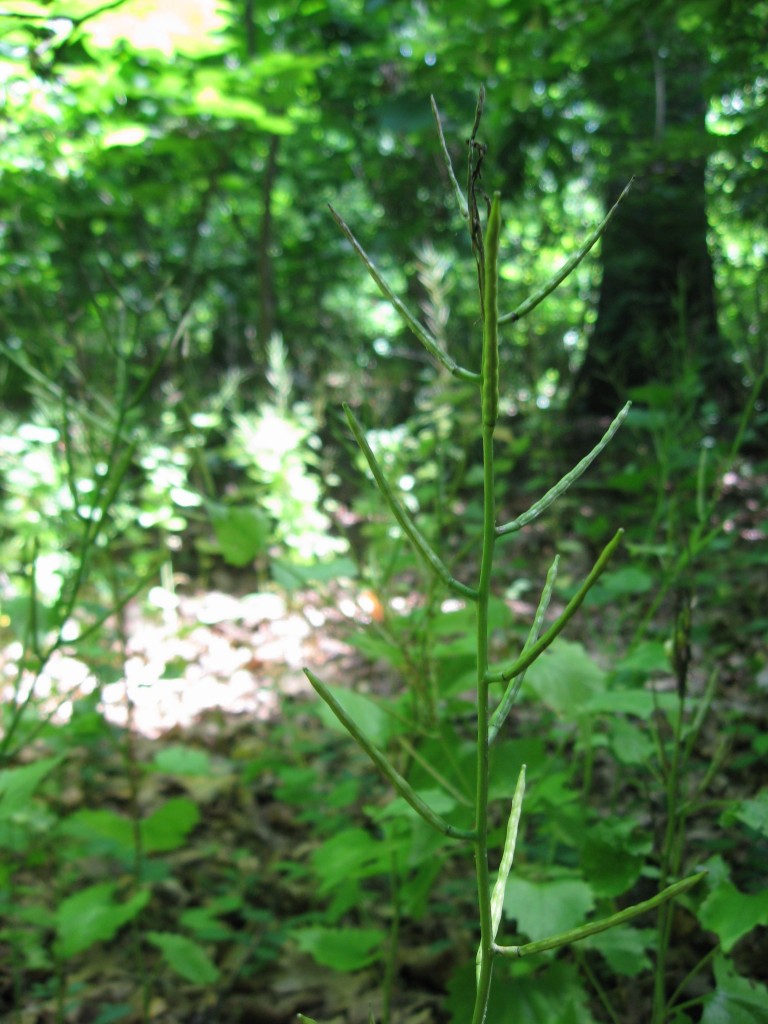
This picture above shows the seed pods that are in the final stages of maturity. If we do not remove this plant now, it could throw its seed and the damage is done. This photographed plant was removed and bagged .
- Garlic mustard removal in Morris Park, Philadelphia
We are trying to control this species in Morris Park, to give this little segment of land a break, and to see what will happen. Â This is a milestone for us, to be at it, consistent and ready for the long haul.
In this next picture, you will see the invasive exotic Garlic mustard, and the native white oak.
The Oak tree is a native specimen, just growing on its own. It is threatened by the Garlic mustard. This is in an area that the tree canopy has been in decline, due to excessive disturbance and resulting encroachment of non native species. We want the native trees to grow back to restore the canopy. By removing the Garlic mustard, the oak seedlings are now getting the light they need to grow, and they are also able to have access to moisture through their roots, aided by the mychorrizal bacteria, which the oaks depend on to help their roots absorb the moisture in the ground.
The Garlic Mustard plant disturbs this relationship, resulting in the inhibited growth of young trees, which is a situation that threatens the rehabilitation of a blighted forest.
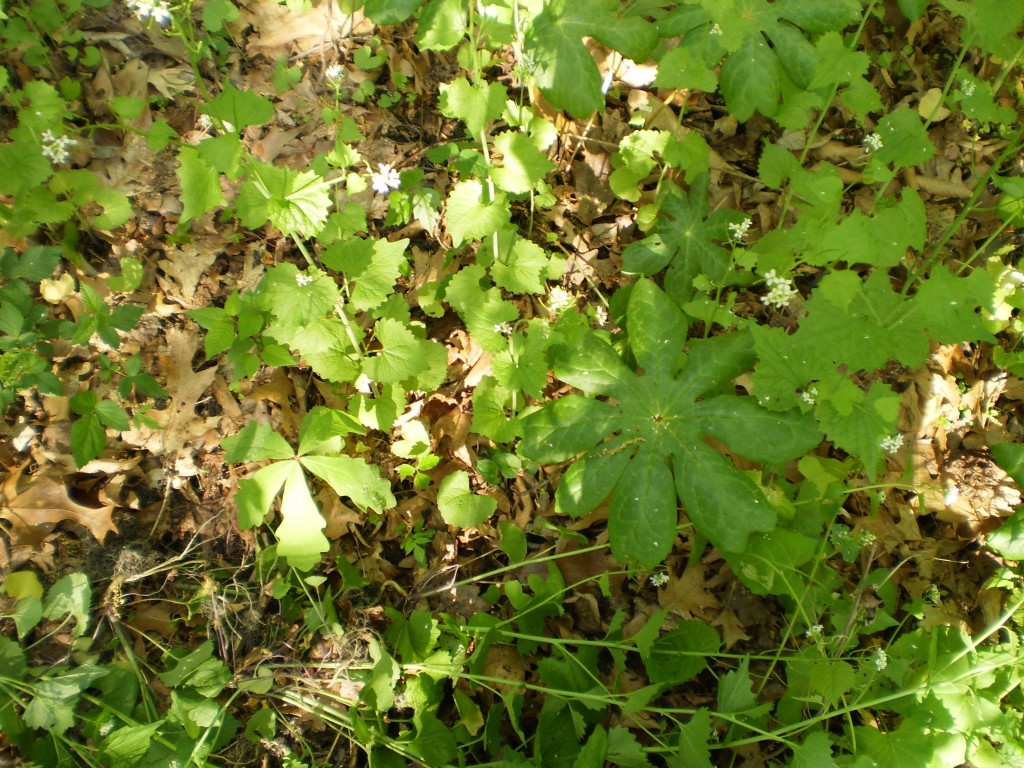
We have observed that the areas of Morris Park where the forest has thinned out and there is a decrease in trees, there is an increase in invasives.  When we find a small oak sapling buried under a mass of Garlic mustard, and  we pull out all of the Garlic mustard, we get a straightforward on-the-ground sense of exactly why we are doing this, and what it is all about.
Alot of native woodland plants are being stifled by the Garlic mustard, and as we pull we discover more and more. Â Also, our square foot by square foot scanning of the area in search of Garlic mustard each spring gives us a window of opportunity to spot any emerging invasives that we need to be aware of and immediately eradicate.
We found Mile-A-minute vine (Persicaria perfoliata), a serious threat, growing in several spots. This noxious annual vine was immediately removed, and right before its flowering.
The Garlic Mustard removal exercise has become for us a Rite -Of -Spring. Â We cant stop doing it, otherwise we will have wasted years of work as we watch un-pulled plants throw hundreds of seeds back into the forest.
This plant is a bi-annual, which requires reseeding to continue propagation, which involves a different dimension in eradicating the plant.
The ability to remove the seed source gives us hope that we can actually control this noxious invasive, we get direct results that we can see in just two years. And we know that if we dont keep pulling every year, our efforts are negated and the problem continues. Â Garlic Mustard has forced us to become consistent stewards, that can never miss a beat. Also the more we pull, the less we have to do the following years, allowing us to focus on other priorities. Â Follow through practices on any restoration project are crucial to success.
Once you start environmental restoration, you are pulled in and committed. Â Its a great position to be in: you are affecting the environment you live and work in, and this is rewarding.
These next two pictures are a before and after taken an hour apart in exactly the same location:
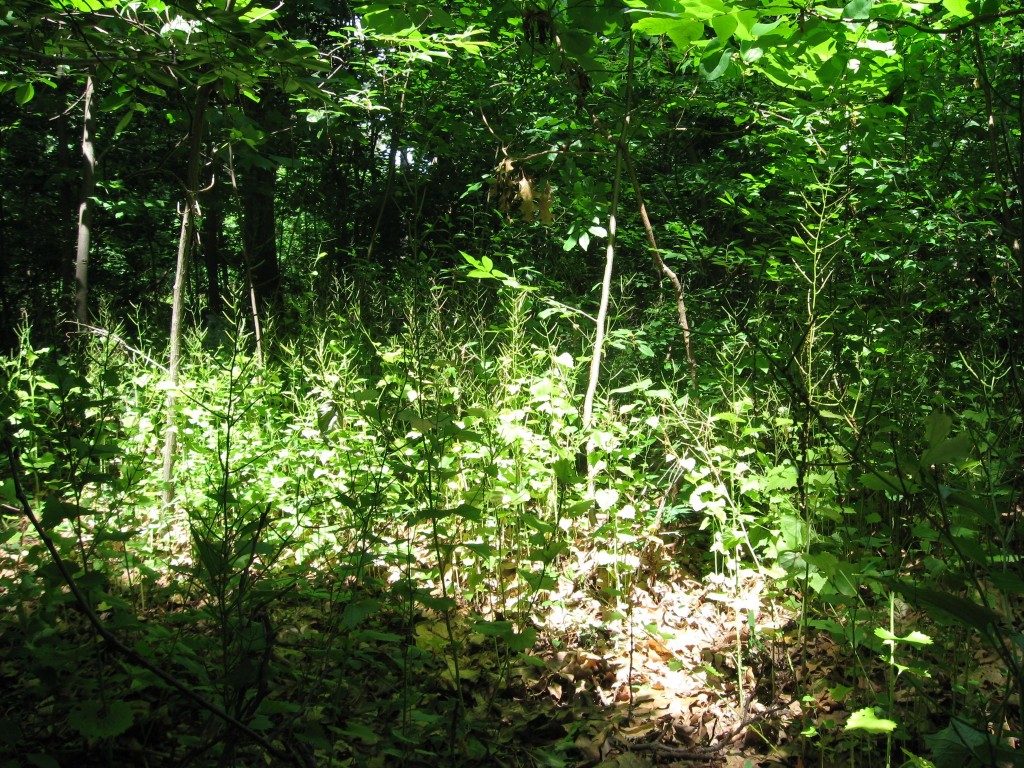
Here is a site in Morris Park infested with Garlic mustard, in a woodland area that for the most part is free of this invasive.  This site was identified and targeted by the Sanguine Root as  high priority- an isolated infestation, adjacent to a woodland free of most invasives.  The above picture was taken just before an intensive pulling and bagging operation.
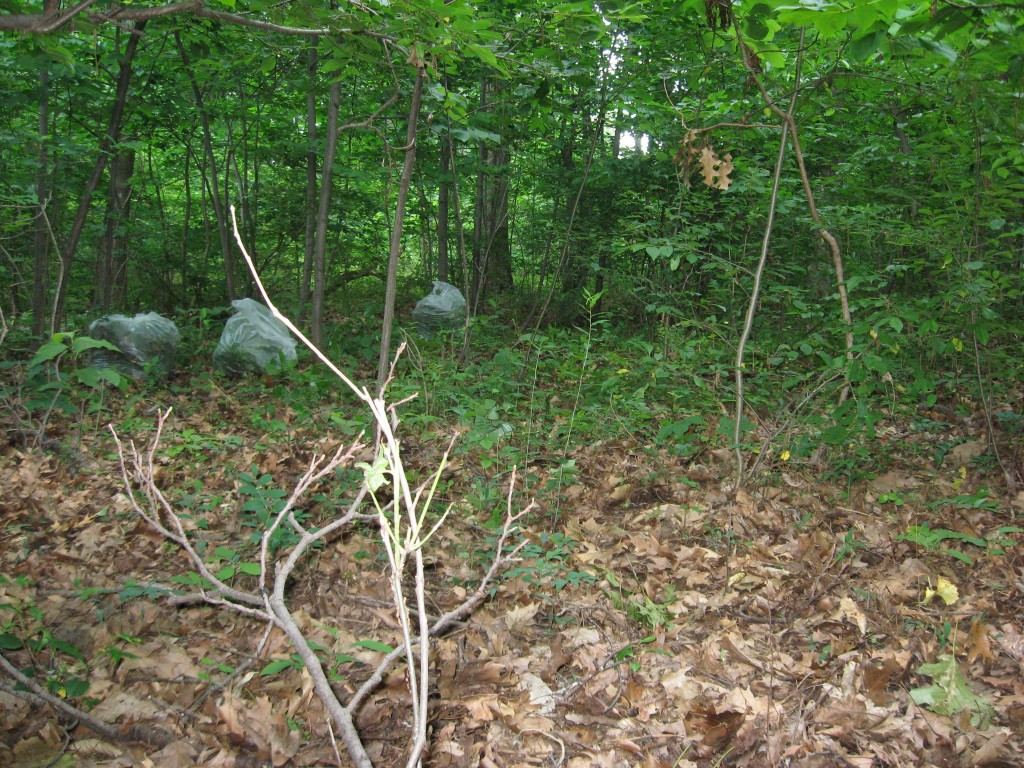
And this picture an hour later. Beneath the infestation was an herbaceous layer with promise, and several species of native sapling trees; Oak, Hickory, Dogwood, Sassafrass and Tulip Poplar .
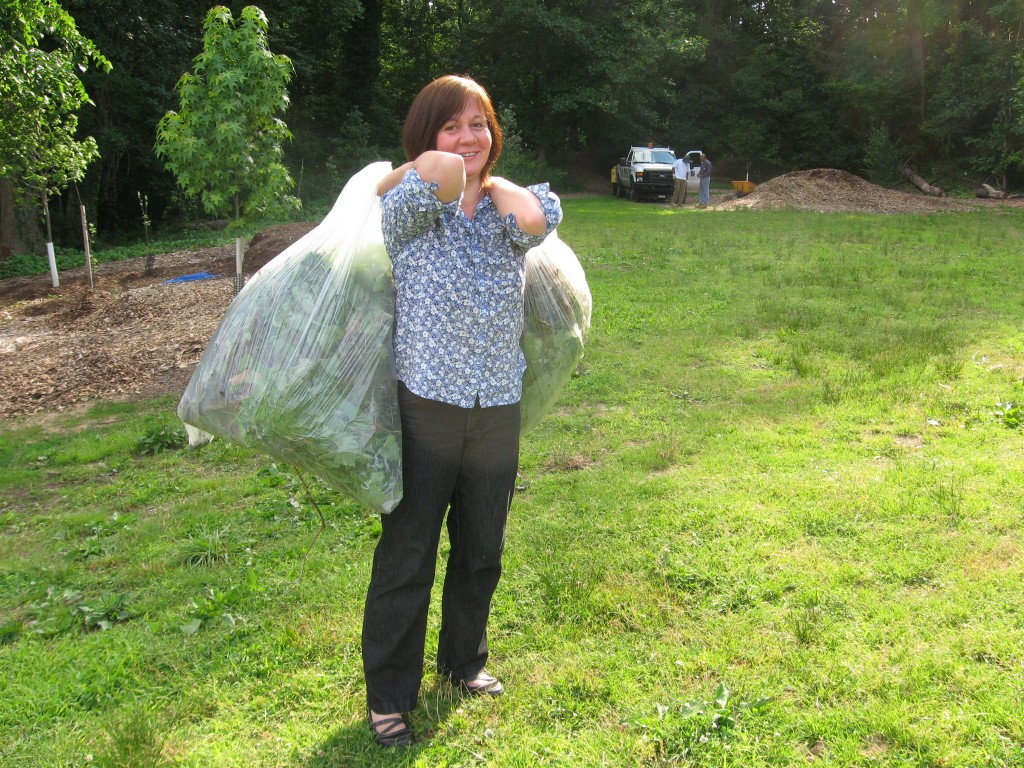
A most important component of volunteering our time is the fun we have doing it. Learning about all of the different species, both native and invasive and non-native, and the natural environment we work in as a whole is exceptionally rewarding. Also the people we work with and the like-minded neighbors and community that care about the park and nature make these restoration projects enjoyable.



